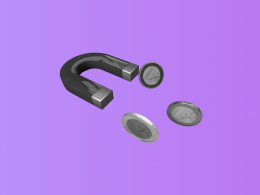As an e-commerce business owner, you’ve surely debated what the best way to get paid by your customers is. There are many payment processors out there, and Stripe is just one of them.
In this article, we’ll discuss what Stripe is, what a Stripe deposit entails, and other questions you may have about receiving deposits through Stripe.
Make every transaction count:
Get your Stripe guide! 📖
Dive deep into the world of Stripe, understand the nuances of payment processing, and learn how to harness this knowledge to enhance your profitability. Download our guide now!
What Is Stripe?
Stripe is a payment processor that helps businesses accept and process payments online. It’s one of the most popular options for e-commerce businesses, as it’s easy to set up and use. You can use Stripe to accept payments via credit and debit cards, as well as other methods such as Apple Pay, Google Pay, and ‘buy now, pay later’ services.
When a customer wants to pay for something on your website, they will enter their payment information into a form provided by Stripe. Stripe will then process the payment and transfer the funds to your account. The whole process happens quickly and seamlessly, which is why Stripe is a popular choice for businesses that need to accept payments online.
If you’re receiving Shopify payments by Stripe, make sure to use a Stripe bookkeeping integration to keep all your sales data in one place.
How Does Stripe Deposit Work?
A Stripe deposit is simply a transfer of funds from a customer’s account to your Stripe account. This deposit is typically made after a customer has made a purchase on your website – the deposit is used to cover the cost of the transaction and is then transferred to your bank account. Stripe typically deposits funds into your account within two to three business days.
It’s important to note that Stripe charges fees for each transaction. These fees are deducted from the total amount of the sale before the deposit is made into your account.
How Long Does It Take a Stripe Deposit to Reach Your Bank Account?
To understand how long a Stripe deposit takes to reach your bank account, it’s important to know about ‘Payout Speed’ and ‘Payout Schedule.’
Payout Speed is the amount of time it takes for Stripe to deposit funds into your Stripe account after a sale has been made. The Payout Speed for Stripe depends on your location — in most countries, it’s two to three business days.
Payout Schedule is the day of the week that Stripe will deposit funds into your bank account. This is something that you can adjust based on your preferences, but by default, Stripe sets payment frequency to daily. This means that Stripe will deposit payments into your account every day (payments your customers made two to three days ago, depending on your payout speed).
You can also set your payout schedule to weekly, monthly, or manual, whereby you initiate the payout yourself.
What Is an Unknown Stripe Deposit?
Sometimes, you may see a Stripe deposit in your bank account that you don’t recognize; this can come from two places. First – say you run multiple businesses and this is a payment from another business that uses Stripe, or second – maybe you have multiple Stripe accounts and this is a payment from one of your other Stripe accounts.
If you’re unsure where the payment came from, you can always contact Stripe support for more information.
What Is a Stripe Charge on a Bank Statement?
From a customer’s point of view, when they make a purchase using Stripe, all they’ll see on their bank statement is a charge from the company that they made the purchase from. For example, if a customer bought a shirt from your online store, the only thing they would see on their bank statement is a charge from your company. The word “Stripe” wouldn’t appear anywhere on the statement; however, a customer may sometimes see the word “Stripe” on their bank statement if your company name fails to register properly.
If customers are unsure about which business charged them via Stripe, they can use Stripe’s secure charge lookup tool to find out. When they enter the charge amount, charge date, and their card number, they can see which business charged them via Stripe.
There are many payment options available to businesses both large and small. If Stripe isn’t the right fit for you, check out our recent article on receiving funds from Afterpay.

.png)




